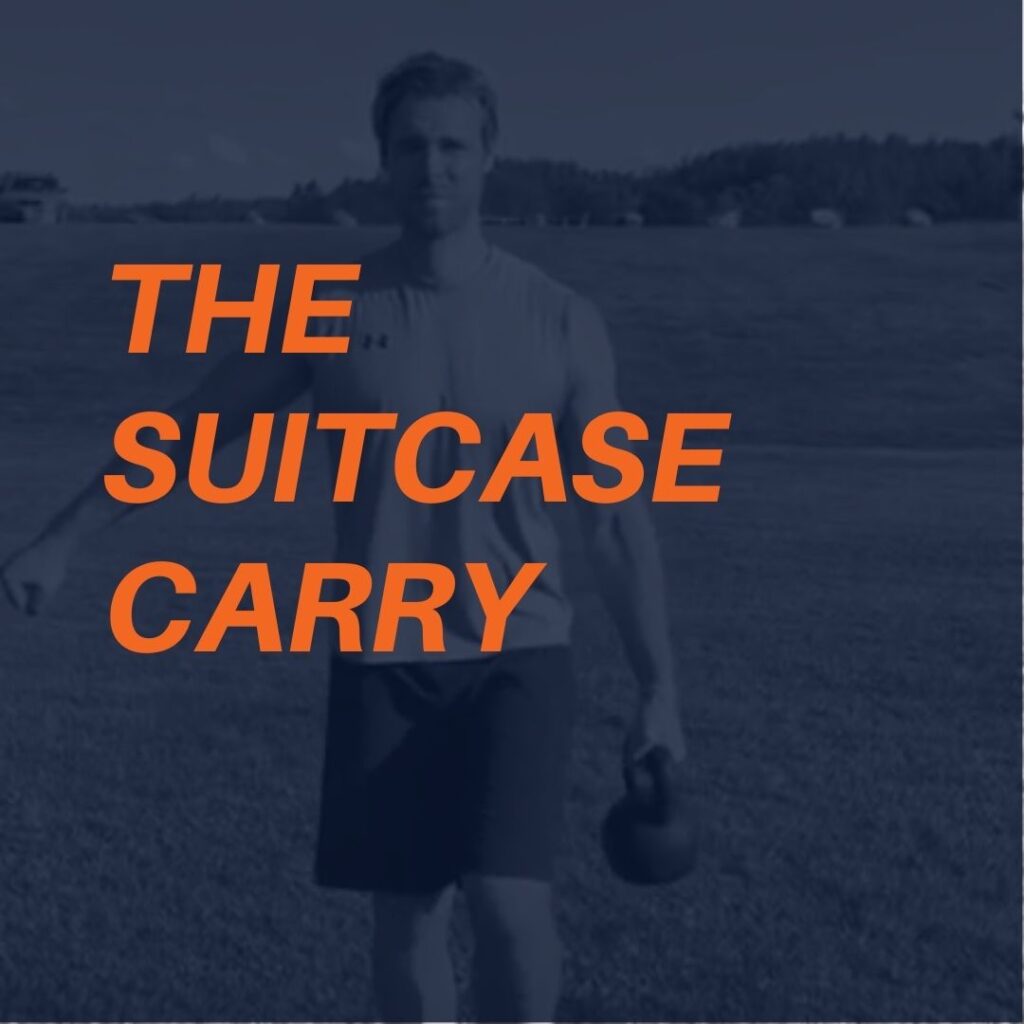Suitcase Carries are one of the best core exercises that personal trainers can have their clients perform. You pick up a kettlebell on one side only and ….walk. Sounds simple enough, but is anything but easy when the weight is ideal to challenge the carrier enough. It is considered to be a progression from the farmer’s carry (one weight on each side) and is practical to everything that we do from carrying groceries to carrying a suitcase to the airport, hence–suitcase carry.
Benefits of The Suitcase Carry
Suitcase Carries will challenge your grip, work your shoulders, obliques, and deep abdominal muscles. This movement works your hip stabilizers, and is terrific for injury reduction and building resiliency.
Progression from Side Planks
One of the best progressions from floor-based “core exercises” is to get off the floor! The side plank works Anti-Lateral Flexion which is beneficial for having a strong, athletic, and injury-reduction core. The core can laterally flex but that doesn’t mean it should, and by training anti-lateral flexion muscles like doing the suitcase carry, you are actually working how the core was designed to be worked.
How To Do Suitcase Carries
1.) Hinge back and pick up the weight. Remember to not round your back but to lift anything up as if you were lifting something heavy because you are.
2.) Get tall. Keep your shoulders down and away from your ears. Brace your core muscles, and hold the weight out towards your side. The weight shouldn’t touch your body and you want to engage your lats by having a little distance from arm to your side.
3.) Walk slowly. Slowly is the key word with carries. Your goal should be able to maintain a tall walking posture the entire time without contradictions.
Common Mistakes
Even though this exercise seems simple in execution, plenty can go wrong. Personal trainers should still cue and guide clients to maintain proper form and to connect with body awareness while they are walking with a challenging weight. The following are some common mistakes fitness clients may make and should be corrected to avoid injury and optimize benefit:
- Leaning over
- Shrugging your shoulders
- Favoring the side with the weight
- Rushing or not moving slowly
- Not keeping the weight out to the side but rather against your body
Next Steps After Suitcase Carry Mastery
Once you have the basics mastered, you can add more stimulus to your workouts. The most obvious way is to add more weight (but be honest with yourself, if it looks bad it probably is), you can add more distance to your carries, change up your grip by implementing a towel or “fat grip,” or change the object that you are carrying entirely. Kettlebells are the most common exercise tool used to do carries but you can use a dumbbell, sandbag, bucket, etc.
Final Thoughts
Suitcase carries are great to build off from side planks or to add an additional challenge to the farmer’s carry. Be sure to gradually add weight over time without ever compromising form or the speed in which you walk. Think of all carries as a moving plank or in the case of the suitcase carry, a moving side plank.
[sc name=”functional” ][/sc]



